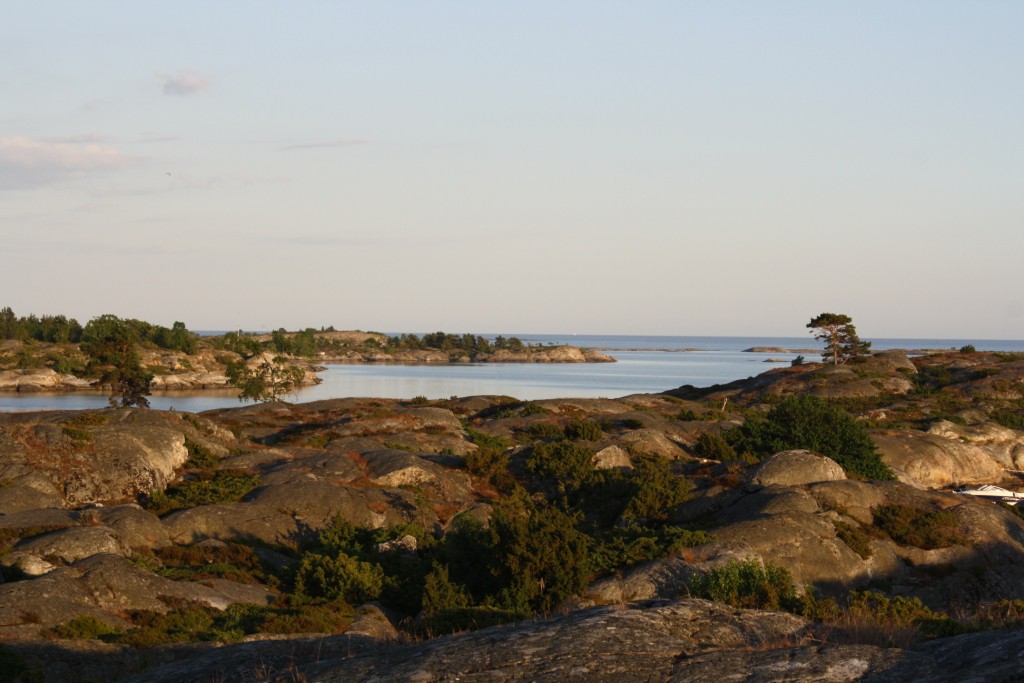Updated 2021-08-28
The bedrock in the nature reserve mainly consists of granite and leptite. The vegetation of the acidic bedrock differs significantly from the vegetation of the calcareous bedrocks that are more common in the archipelago; there, the vegetation is richer and more profuse. The flora of Bullerö nature reserve is typical for the mid and outer archipelago. The islands in the western section of the nature reserve are forested, while the vegetation in the east is significantly sparser. There, the pine trees are replaced with deciduous forests where alder, aspen tree, birch, and ash are common. The low-growing trees make a maritime deciduous forest – a nature type that is very unique for the archipelagos of Stockholm and Åland. In the hollows between bare rocks sphagnum moss, cloudberries, hare’s tail, and sundews grow. On the edges, you can also find crowberry, heather, and bog whortleberry. Due to frequent strong winds, hard winters, and dry summers, the vegetation resembles that of alpine areas.
The beaches
The salty and barren shores are home to lichens. Right above the surface, the black and slippery black tar lichen grows. This is the only plant that can survive the constant washings of saltwater. A little higher, out of reach of the salty waves, map lichen grows. During summer, purple loosestrife and garden speedwell form beautiful flowerbeds along the margin of the shoreline.
Meadows and pastures
The open meadows and pastures of Bullerö and Rågskär, the two biggest islands in the nature reserve, are taken care of through pasturage and mowing. Common plants at the meadows are cat’s foot, common milkwort, lesser butterfly orchid, and cowslip. These species would be replaced by high grass, herbs, and brushwood, if the landscape wasn’t kept open.
Marine enviroment
The Baltic Sea is the world’s biggest sea with brackish water and was formed after the latest ice age. Therefore, it is seen as a young ocean, where plants and animals haven’t had much time to evolve. The Baltic Sea naturally has a poor number of species due to the brackish water, and many plants and animals live on the threshold of survival. Many species, as sea mussel and acon barnacle, are therefore smaller than usual. The bladderwrack is of great importance in the ecosystem of the Baltic Sea and forms belts that in many ways resemble forests on shore. The majority of the marine animal species of the Baltic Sea are dependent on the bladderwrack at some point in life. During recent years, the bladderwrack’s spreading has decreased due to the over fertilization of the Baltic Sea. Many of the animals and plants are therefore threatened.
Protected birdlife
The birdlife in the nature reserve is very intense. The eider duck is the most common species, but the tufted duck, velvet scoter, red-breasted merganser, and graylag goose are also present, along with great numbers of gulls and terns of various species. Oystercatchers and turnstones move about on the rocky shores of the most easterly islets, and with luck, one may hear the bubbly mating call of black grouse cocks from bare islets in the spring. In the nature reserve, sea eagle also hedges. The sea eagles are, like many other species, dependent on undisturbed nesting places. Therefore, certain areas in the nature reserve are bird sanctuaries from February 1 to August 15. During these times, it is prohibited to reside in the area.

Foto: Fredrik Olsén
